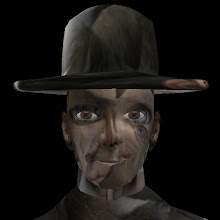Bit of a thought in progress, this post. Also a tribute to Darwin, who was born 200 years ago today.
I read this article about horizontal gene transfer, and it got me thinking about how this might apply to creative thinking and ideas generation. The article reveals that the tree of life isn't really a tree, but a bit of tangled old mess, as genes keep getting transplanted from one species to another by viruses and hybridisation and the like. Apparently, there's a bit of snake DNA in the cow genome. The other really fascinating thing in this article is the section about species with larval stages, like caterpillars/butterflies. Some researchers think that this is the result of the amalgamation of the genomes of two different species into one functioning genome. The idea is that the genomes are expressed sequentially, with one organism's original life-code doing the business first, with a metamorphosis leading to the second species DNA taking over to finish the job off. This seems quite reasonable. If an alien landed on earth and looked at a caterpillar and a butterfly, they would assume they were different species. If you find all of this hard to swallow, read the bit about the starfish.
Anyway, if memes are idea genes, then what if we embrace horizontal transfer, hybridisation and dual genomes to enrich the evolution of strong ideas? If the right two jokes got stuck together, would they become one dominant joke? Would we eventually forget that it ever existed as two separate jokes? If we took other persistent memes and swapped chunks of them, would new, more successful memes emerge? How might this process work in a shorter time frame, like the course of an ideas generation workshop or student project? How might it apply to social software? Can I think of a way of using Twitter to test this hypothesis?
Thursday, 12 February 2009
Subscribe to:
Post Comments (Atom)

2 comments:
Hi Ian
I was fascinated by the article "Why Darwin was wrong about the tree of life" and also by your thought in progress; in the interests of Horizontal Meme Transfer I thought I should comment!
Though I like your analogy, is not one of the problems with the concept of the meme that it does not have an understood mechanism of propagation; no defined basic unit analagous to the biological gene? So, if we if we wish to "embrace horizontal transfer, hybridisation and dual genomes to enrich the evolution of strong ideas" an essential first step might be to try to identify such a unit - even if just on the conceptual level - elements of a 'pattern language' perhaps as investigated in the PLaNeT project - http://patternlanguagenetwork.org/?
Cheers
Nick
Aha. I like patterns, especially the original ones in Alexander's Pattern Language book. I suspect that patterns may become memes if they prove to be easily replicable. Mmm. This has set me off thinking again.
Post a Comment